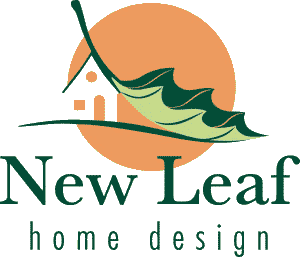Some of you may have heard of the “Slow Food” movement: an approach to food based on the idea that food should taste delicious, be grown in a way that does not harm the environment or our health, and provide fair working conditions for the people who produce it. Well, now there is a “Slow Home” movement that draws on this same kind of values-based approach. As it turns out, the New Leaf approach to design has a lot in common with the Slow Home.
According to architect John Brown of the Slow Home Studio, a Slow Home follows three guiding principles:
1. Construct the home in such a way that environmental impact is minimized, and that the materials used are sustainable and friendly to the environment.
2. Ensure the house is well designed for the people who will live in the home.
3. Organize the space and choose furniture to fit how the homeowners will live in the home.
This all has a lot in common with Sarah Susanka’s “Not So Big House” philosophy, as well as the whole Green movement. But I think “Slow Home” does an especially good job of emphasizing the relationship between our built environment and how we live. The choices we make about our homes affect us for as long as we live in them. Whether it’s how far we have to go to get to schools and shopping, or having a good place for the kids to put their backpacks when they get home from school, the design of our homes determines whether they support us in how we want to live, or become daily obstacles to overcome.
If you’d like to learn more about the Slow Home approach, the Slow Home Studio website has a number of “Design Minute” videos on everything from site design to bathroom storage to spray foam insulation. Their address is http://slowhomestudio.com
originally published February 2011
